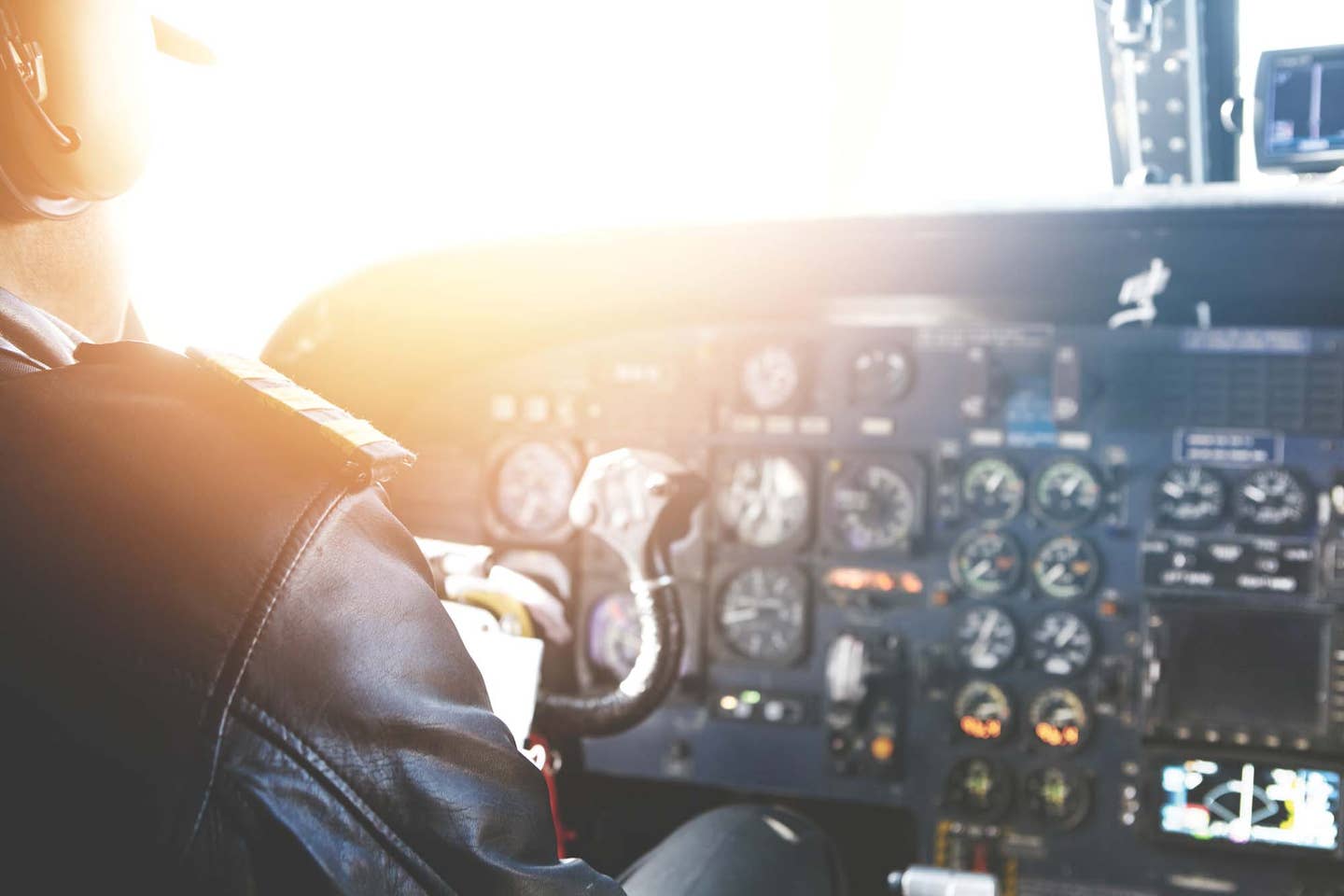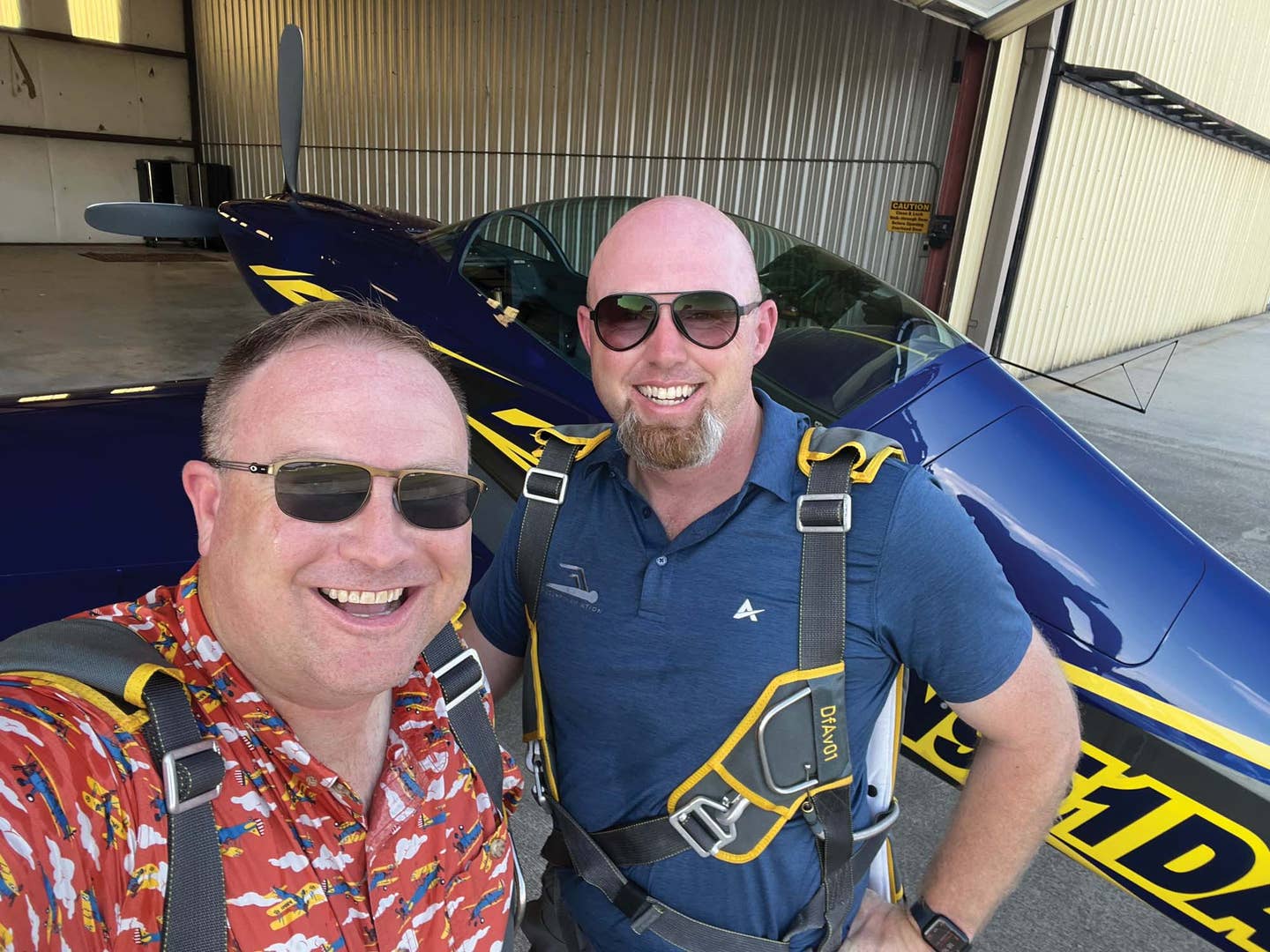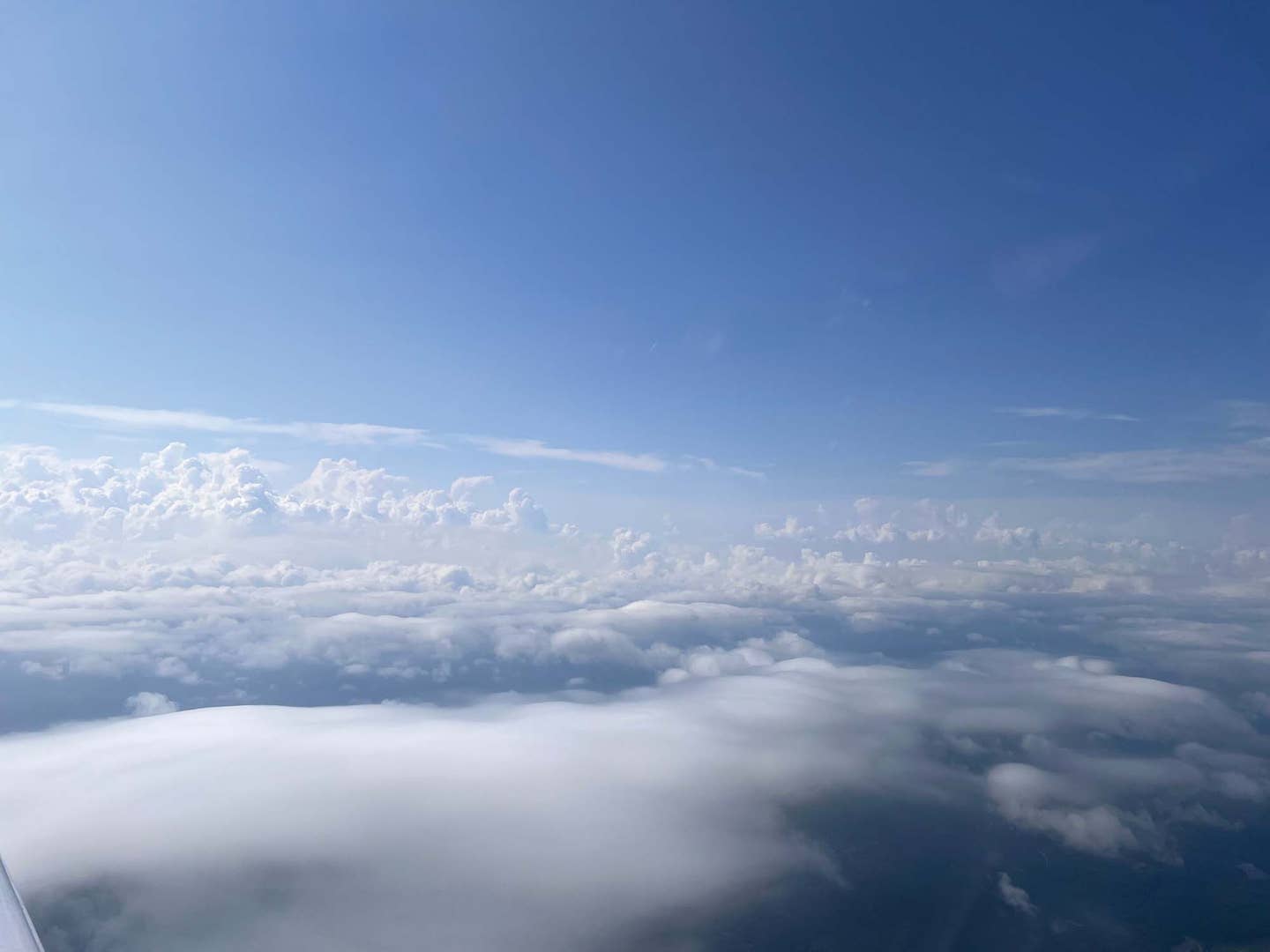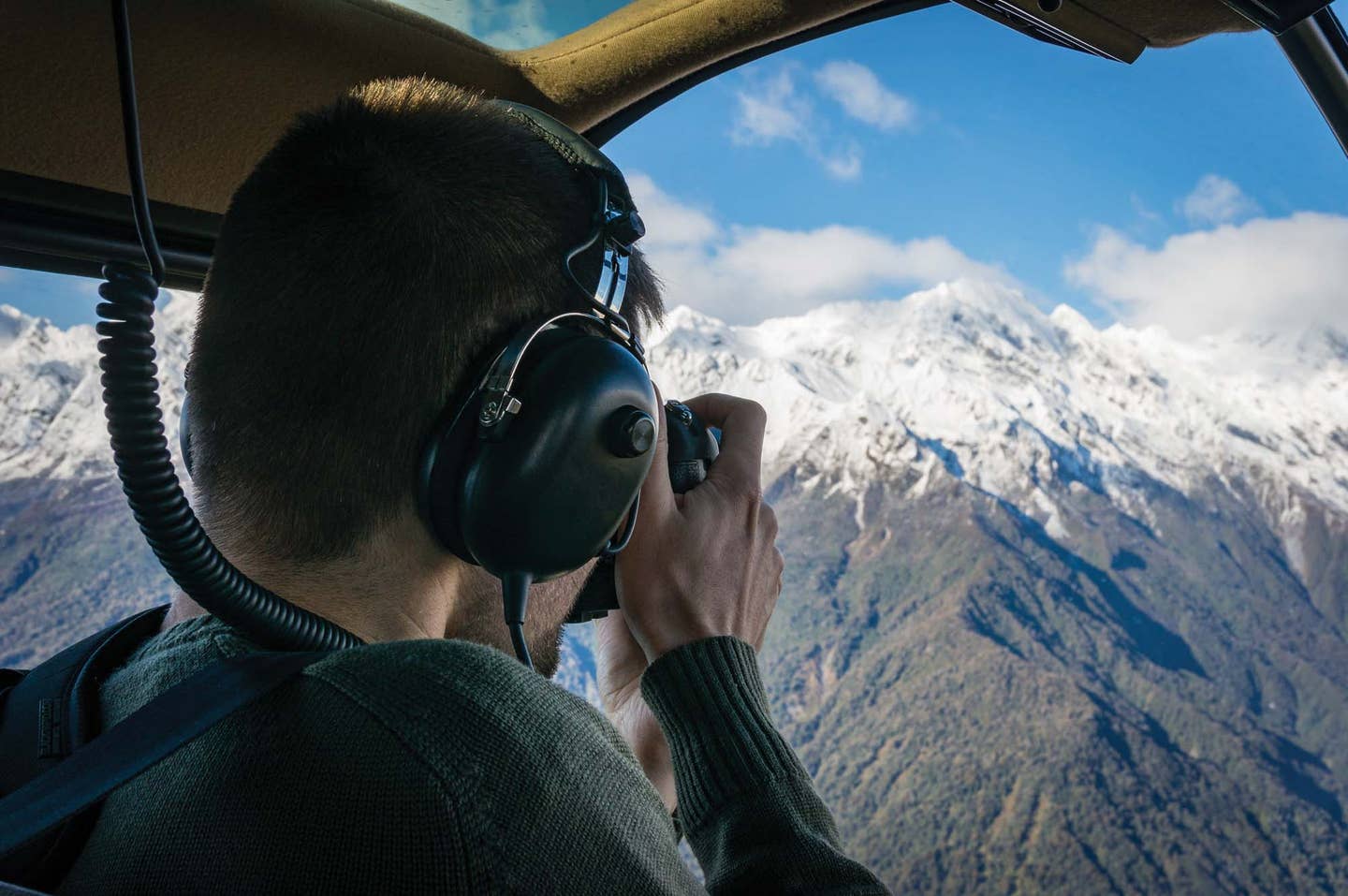 |
For the first time since the great crash of 2008, we've heard nothing but optimism (though some of it was cautious) during interviews for our annual aerospace careers feature. That's driven by growth in orders for airplanes (particularly airliners). A 2012 FAA aerospace forecast predicts one billion air passengers by 2024, and that in turn means opportunities for a wide range of related professions.
Air Transport Pilot
Traditionally, the airlines have been seen as the ideal career route for pilots, with the ultimate goal being Captain at a major air carrier. While mergers and bankruptcies leading to lower wages have plagued most U.S. air carriers, this can still be a very lucrative career. According to the U.S. Bureau of Labor Statistics (BLS), the average annual wage for airline pilots and flight engineers is $116,930. The BLS estimates that 68,580 pilots and flight engineers were employed by the airlines in 2010 with a low (less than 1%) annual growth rate. Higher pay may be available for pilots willing to relocate; at a recent job fair hosted by Pan Am Flight Academy, close to 100 experienced pilots were hired by airlines in China, which is seeing explosive growth in airline routes, receiving initial offers close to $200,000 per year.
Until recently, the route to the airlines generally started with a commercial rating and as little as 200 hours flying time as a first officer (copilot) at a regional airline. In the wake of the Colgan Air tragedy, federal legislation directed the FAA to require increased qualifications. As a result, the agency published a Notice of Proposed Rulemaking (NPRM) requiring all pilots in Part 121 (airline) flight operations to hold an Air Transport Pilot (ATP) certificate, a type rating for the airplane being flown, and---unless the pilot has military experience or graduated from a degree-granting aviation college or university---at least 1,500 hours pilot time. More than 1,000 hours of Part 121 time will be required before a first officer can move to the left seat as an airline captain.
The air-carrier work environment can be tough---pilots bid for route schedules, with those who have the most seniority getting first pick. Often, nights are spent in hotel rooms. When airlines downsize, low-seniority pilots are the first laid off, and in lean times may spend many days "on reserve" waiting for a telephone or pager call to report for work.
 Commercial Pilot |
Commercial Pilot
A slightly less lucrative job---but often with better working conditions---can be found in nonscheduled airlines, air taxi, executive jet and helicopter operations. An ATP may not be required for these jobs though it's often desirable. The average annual wage is lower---$73,490 in 2010 according to the BLS---but the growth rate is almost double that of airline jobs. And the work environment can be considerably better: Steve Brown, senior vice president for operations at the National Business Aviation Association told us, "The lifestyle is seen as attractive compared to entry-level airline jobs---you're usually home every evening. Commercial pilots aren't on a pager for call-out unless they're on reserve. They bid for a schedule several weeks in advance by salary, and at larger flight departments, the schedule is pretty stable. Smaller flight departments, with fewer pilots and planes, are more likely to operate on call."
Brown added an interesting point about job qualifications: "There's a real benefit in being well-rounded---that's more important than just being able to pass a test! Hiring decisions are often made to try and replace people who've moved or to fill in an area they feel they need. A new pilot with a commercial certificate and limited hours, who has a good safety orientation and familiarity with the latest technology, may win out over someone with an ATP and a lot of hours in just a few types."
 Unmanned Aerial Systems |
Unmanned Aerial Systems
There also are pilot jobs available in Unmanned Aerial Systems (UAS)---along with jobs for sensor operators, planners and maintainers. Today, most of those jobs are military or in various federal agencies. That may be about to change---the legislation authorizing the FAA budget last year required the agency to designate sites for testing unmanned systems in the U.S. national airspace. Experts in the field expect that every flying job that's "boring, dangerous or dirty" will eventually move to remotely piloted vehicles, including fire-fighting, pipeline patrol and agricultural spraying. An FAA forecast published last year predicted 10,000 unmanned vehicles will be operating in the U.S. airspace in five years. Currently, unmanned pilot qualifications include an FAA commercial pilot license, preferably multi-engine (though single-engine may be enough, depending on the vehicle) with several hundred hours' experience. A four-year degree and ATP and Flight Instructor Certifications are a definite plus, and for the jobs available now, U.S. citizenship is required. Salaries start at around $50,000, and reach $75,000 with experience. Most experts we've spoken with are enthusiastic about opportunities in this field---professor Ray Bedard of Embry-Riddle Aeronautical University said: "The technology is moving faster than the regulatory environment. This is the future of aviation!"
 Aerospace Maintenance Technicians |
Aerospace Manufacturing & Maintenance
Aerospace Manufacturing and Maintenance workers create and maintain the hardware that other aerospace professionals work with. According to the U.S. Bureau of Labor Statistics, over 140,000 people are employed as mechanics, service technicians and avionics specialists at aerospace manufacturers, airlines and other operators, repair stations and Fixed-Base Operators (FBOs). These jobs pay by the hour and often involve shift work. According to the BLS, getting hired usually requires a semester or more of community college or other specialized training---and with employment in this field growing very slowly, getting hired can take time. Many firms are hiring only as required to replace older employees as they retire. Embry-Riddle's George DeWees warned us last year that "it can take six months to a year to find a job."
 Air Traffic Controllers |
Air Traffic Controllers
Air Traffic Management is a field projected to evolve as the FAA rolls out its Next Generation Air Transportation System (NextGen). Today, Air Traffic Controllers are responsible for keeping airplanes separated when flying under instrument flight rules, but according to Embry-Riddle professor (and former FAA air traffic controller and supervisor) Gregory "Sid" McGuirk, that's going to change: "The FAA is looking toward the day when air traffic is collaboratively managed rather than controlled---students graduating now will eventually work more as monitors than controllers." Still, McGuirk agreed that this field remains among the most challenging of all aerospace careers: "When things go south, you need the adrenalin rush so as not to lose control!" It's also a field with a lot of opportunity---the FAA plans to hire more than 1,000 controllers per year for the foreseeable future, mainly replacing controllers who have reached the mandatory retirement age of 56. The job involves shift work, usually adding up to a 40-hour week, though overtime may be required. According to the BLS, 90% of today's controllers make between $54,480 and $165,660 per year.
Airline Dispatchers
Airline Dispatchers share responsibility with the captain for the safety of U.S. scheduled airline flights, and are involved in many aspects of flight planning and operation. They're required to pass an examination comparable in most respects to that required for the ATP certificate, and hours for dispatchers are limited by federal regulations. According to Airline Dispatchers Federation executive vice president John Schwoyer, employment in the field is "stable and a sought-after position within and outside the airlines," estimated at approximately 5,000 licensed dispatchers in the U.S. Starting salaries vary from $20-$40,000 for new hires at regional airlines, rising to over $100,000 for experienced dispatchers at major air carriers.
 Aerospace Engineers |
Aerospace Engineers
Designing air and space vehicles and related equipment is the job of Aerospace Engineers. Paul Kostek, a distinguished lecturer for the American Institute of Aeronautics and Astronautics, sees considerable opportunity in this field: "There are some clouds with the discussion of defense cuts, but demand is picking up at Boeing, Airbus, Bombardier and their suppliers. In my work, I'm seeing more and more consulting opportunities and more word from people looking to hire." Getting hired requires at least a four-year bachelor's degree in engineering or one of the physical sciences. Most engineers work a regular 40-hour week, but some work rotating shifts or odd hours when required. According to the BLS, as of last year 78,450 aerospace engineers had jobs in the U.S., about 1â3 of them at manufacturers. Wages range from $60,620 to $143,360 depending mainly on experience, though advanced degrees can help.
Airport/Aviation Managers
Airport/Aviation Managers fill a wide variety of roles focused on the business side of aviation, according to University of North Dakota Professor Kim Kenville, who told us: "We're seeing airports open up positions and create new departments because of increased traffic. Airports are shouldering more work on ground service as airlines outsource, creating a new line of business for FBOs. That makes training and customer service more of an airport responsibility, rather than being handled by airline head offices." Management jobs usually require a four-year degree, with earnings ranging from $40,000 to six figures with experience. Kenville told us the best route into one of these jobs is often an internship, typically paying $10 to $15 per hour.
 Meteorology & Atmospheric Science |
Meteorology & Atmospheric Science
Meteorology and Atmospheric Science are two closely related professional fields that involve weather and climate forecasting, and both kinds of jobs are found at aerospace organizations including federal agencies and major air carriers. Like other fields, there's a space component here as well, with space weather (particularly solar storms) becoming more important as air navigation depends increasingly on GPS and other space-based technologies. A four-year science or engineering degree is usually required, and advanced degrees are highly desirable. Operational meteorologists (including U.S. Weather Service teams collocated with FAA regional traffic control centers) work round-the-clock shifts, while long-range forecasters and those involved in atmospheric research work regular office hours. According to the BLS, there are currently over 8,600 atmospheric and space scientists employed in the U.S., with salaries ranging from under $45,000 to over $132,000 annually. Over 1â3 are employed by the federal government, mainly at the National Oceanic and Atmospheric Administration (NOAA). The BLS expects the field to grow by about 15% in this decade, with most new jobs coming from the private sector.
Logistics, Planning & Safety
Logistics, Planning and Safety along with Maintenance Control are representative of jobs that mechanics, technicians and other hourly employees can work their way into with additional education and experience. Qualifications vary: A two-year community college degree will help with entry-level jobs; a four-year bachelor degree may be required for supervisory and management positions. According to the BLS, almost 7,000 logisticians, responsible for getting raw materials, parts and sub-assemblies to the right place at the right time, are employed in aerospace product and part manufacturing, at an average salary over $73,000 per year. The BLS doesn't break out what proportion of occupational safety and health specialists and technicians are employed in aerospace businesses, but salaries for those jobs range from less than $38,000 to over $94,000 per year, and employment in the field is expected to grow by 15% in this decade.
Aerospace Medicine
Physicians who work in Aerospace Medicine have some of the best-paying jobs available, averaging well over $100,000 per year. The FAA currently has over 3,900 Aviation Medical Examiners, most of who do the work on a part-time basis in addition to a regular medical practice. The job requires extensive education, including a four-year degree followed by a medical residency, on top of which the FAA has additional training requirements. A much smaller number of physicians work as full-time Flight Surgeons, typically after completing an aerospace medicine residency, either through the military or one of two civilian schools (the University of Texas, near NASA's manned space center in Houston or Wright State University near Wright-Patterson Air Force Base in Fairborn, Ohio). Stanley R. Mohler, M.D., professor emeritus of Aerospace Medicine at Wright State, told us that physicians are employed full-time by the FAA, NASA, some of the airlines and aerospace manufacturers. Graduates of both the Wright State and University of Texas residencies have flown as NASA astronauts.
Spacecraft Controllers
While NASA's manned space program gets most attention from the press, there are a much larger number of unmanned satellites in orbit. They're monitored and (when necessary) controlled by Spacecraft (or Satellite) Controllers, who have a job that's similar to Air Traffic Management. Since spacecraft are on-orbit 24 hours a day, these jobs typically involve shift work (often on a rotating schedule). Past experience, whether military, NASA, FAA Air Traffic Control or civil nuclear power is a plus for new hires, and a college degree in engineering or physical sciences may be required for some positions.
While there are a limited number of these jobs (an expert told us "a few thousand! mainly in the private industry,") there also are a limited number of people genuinely qualified for them. Gene Milchak, director of satellite ground systems and operations at General Dynamics, told us, "Most of the operators on programs I am around are aging, and since the military buys new hardware (phones, computers, etc.) rather than fixing things, there aren't many technicians available." Wages range from $34,000 to $97,000 with experience---plus overtime for night, weekend and holiday shifts. Job titles vary: Steve Shaffer, former director of NOAA's space operations center, told us the agency advertises for "physical science technicians" rather than satellite controllers, and Milchak said General Dynamics does much the same thing.
Virgin GalacticBy Marc C. Lee |
 With their pilot-astronaut recruiting underway, the door opens for space travel once again. With their pilot-astronaut recruiting underway, the door opens for space travel once again.
It was just over 50 years ago that seven lucky men were selected for the Mercury space program---America's very first manned foray into space. Those seven astronauts forever thrust their names into the history books with a series of courageous flights that paved the way for our country's unparalleled space achievements of the 1960s and '70s. Today, Virgin Galactic has assumed the role of space pioneer with commercial ventures into space that have been several years in arriving, and they're ready for their first flights. For the first time in history, pilot-astronauts are being recruited for this private company. If you're wondering, yes, it still takes the right stuff to be an astronaut, whether for NASA or Virgin Galactic. And this innovative company helmed by Sir Richard Branson is requiring some of the same things that NASA required of astronaut applicants back in the day. Virgin Galactic is poised to become the world's first commercial spaceline. Mojave Desert-based Scaled Composites, founded by Burt Rutan, is developing a series of spacecraft for commercial spaceflight. The new spaceships, VSS Enterprise (VSS stands for "Virgin Space Ship"), SpaceShipTwo, and the mothership, VMS Eve, represent the absolute leading edge in space technology. Since 2004 when Scaled Composites claimed the $10 million Ansari "X-Prize" by developing the world's first private manned spacecraft, Scaled has been making history with their designs. Virgin Galactic's new vehicles share much of the same basic design of the X-Prize winner, but are being built to carry six customers on sub-orbital space flights, allowing an out-of-the-seat zero gravity experience and offering astounding views of the planet from the black sky of space. Commercial operations are set to start in 2012 and will be based at Virgin Galactic's Spaceport America in New Mexico. Pilot-astronaut responsibilities will include involvement in the WhiteKnightTwo and SpaceShipTwo spaceflight system test program in accordance with government regulations and company policies in Mojave, Calif., and Virgin Galactic's commercial operations at Spaceport America in New Mexico. Qualified candidates must be full-course graduates of a recognized test pilot school and must be broadly experienced with both high-performance fast-jet type airplanes and large multi-engine types. In recent years, civilian test pilot schools have surfaced, such as the National Test Pilot School in Mojave, Calif., Empire test Pilot School in the U.K. and a handful of others. However, USAF and U.S. Navy test pilot schools still serve as the standard by which all are measured. The ideal Virgin Galactic career entry path for pilot-astronaut hopefuls remains a military flight program, followed by military test pilot school and subsequent flight test experience, or at least a strong civilian/commercial flight path with civilian test pilot school. Civilian test pilot school consists of a 51-week professional course, and candidates must have a minimum of 750 hours flight time plus at least a bachelor's degree in math, science or engineering. The one-year course costs $918,000 (you read that correctly). Military test-pilot schools accept only a fraction of those that apply each year, and candidates are selected from the most experienced flight officers having math engineering and physics degrees. Virgin will continue pilot-astronaut recruiting in the near future as the company nears commercial space operations. It's an exciting time to be a pilot once again, with dreams of space once again attainable. Visit www.virgingalactic.com. |
| For More Information | |
| Airport Consultants Council www.acconline.org Airline Dispatcher Federation www.dispatcher.org American Institute of Aeronautics and Astronautics www.aiaa.org American Meteorological Society www.ametsoc.org Embry-Riddle Aeronautical University www.erau.edu FAA Aviation Forecasts www.faa.gov/about/office_org /headquarters_offices/apl/ aviation _forecasts Iowa State University Meteorology Program www.ge-at.iastate.edu/ meteorughome.shtml Kansas State University www.k-state.edu |
NOAA Satellite and Information Service (NESDIS) |

Subscribe to Our Newsletter
Get the latest Plane & Pilot Magazine stories delivered directly to your inbox






